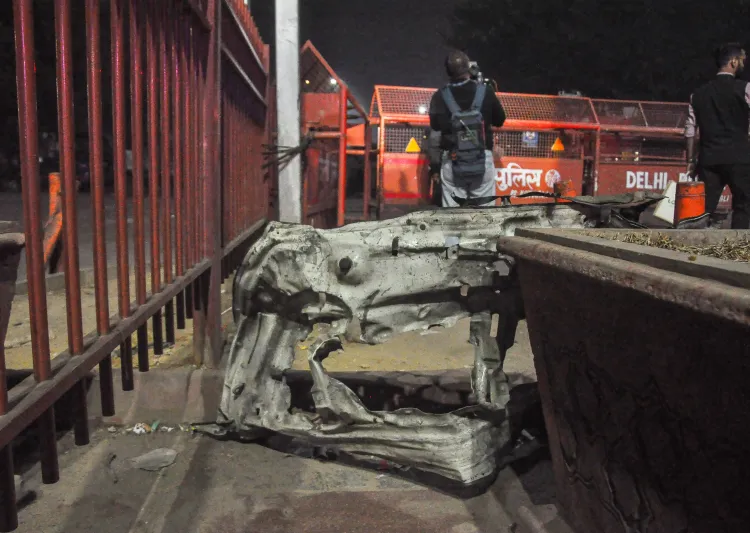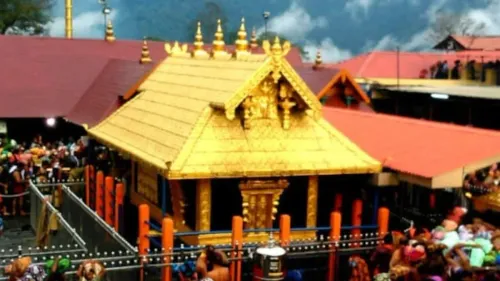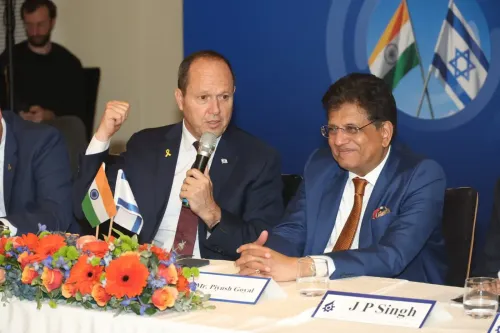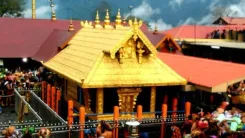Is There a JeM Connection to the Plot for 200 Blasts in North India?

Synopsis
Key Takeaways
- Jaish-e-Mohammad linked to coordinated bomb plot.
- 200 bombs intended for simultaneous detonation.
- Hanzulla played a crucial role in training suspects.
- Explosive materials included TATP and ammonium nitrate.
- Perpetrators utilized secure communication to evade detection.
New Delhi, Nov 21 (NationPress) Authorities have confirmed a link between Jaish-e-Mohammad (JeM) and the explosion that occurred near the historic Red Fort in Delhi on November 10. Investigations have revealed that a JeM operative was responsible for training the suspects in bomb-making techniques.
A significant discovery is that these suspects were preparing to unleash 200 bombs simultaneously across Delhi and other areas of North India. This coordinated attack was orchestrated with the help of the ISI, which assigned a JeM operative to instruct the members of a local module based in Faridabad.
The operative, identified as Hanzulla, was in direct contact with key suspect Maulvi Iran Ahmed. Evidence indicates that Hanzulla facilitated connections between the suspects and the Faridabad module.
Officials emphasize that Hanzulla is a prominent figure within Jaish-e-Mohammad. Posters featuring his name have surfaced in Jammu and Kashmir, prompting the ongoing investigation that uncovered the Faridabad module and the seizure of a staggering 2,900 kilograms of ammonium nitrate.
Moreover, it appears that the module was in the advanced stages of bomb production, with devices designed to be particularly deadly.
According to reports, Hanzulla instructed the suspects to combine Triacetone triperoxide (TATP) with ammonium nitrate, creating a highly potent explosive that is easy to manufacture and can be triggered with minimal expertise.
This type of explosive can be concealed in vehicles and set off in crowded areas due to heat, making it a favored choice of the Islamic State Khorasan Province (ISKP) for individual attackers.
While it is evident that Hanzulla played a pivotal role in instructing the suspects, the exact location of his operations remains unknown. He maintained communication with Ahmed, who introduced him to Shakeel, another suspect responsible for acquiring materials.
Shakeel was ultimately tasked with transporting the explosives and provided the white Hyundai i20 used in the explosion near the Red Fort.
According to investigators, the initial plan aimed for simultaneous detonation of the explosives, which explains the substantial quantity of ammonium nitrate procured.
The goal was to execute a series of 200 bombings across Delhi, Gurugram, and Faridabad. Had this plot been successful, the repercussions would have been catastrophic, as noted by officials.
Currently, investigators are tracing Hanzulla's whereabouts. So far, it has been determined that Ahmed was coordinating the Faridabad module with assistance from another handler based in Afghanistan.
The perpetrators managed to keep their plans hidden for an extended period by utilizing secure messaging platforms and coded language. Transcripts reveal various code names, including ‘biriyani’ to signify explosives. Their professions allowed them to evade scrutiny, as many were medical professionals.
Dr. Shaheen, a key recruiter for the module, made multiple trips to Jammu and Kashmir without drawing attention, meeting with Ahmed to discuss recruitment strategies to expand their professional network and strengthen their operational capabilities.









